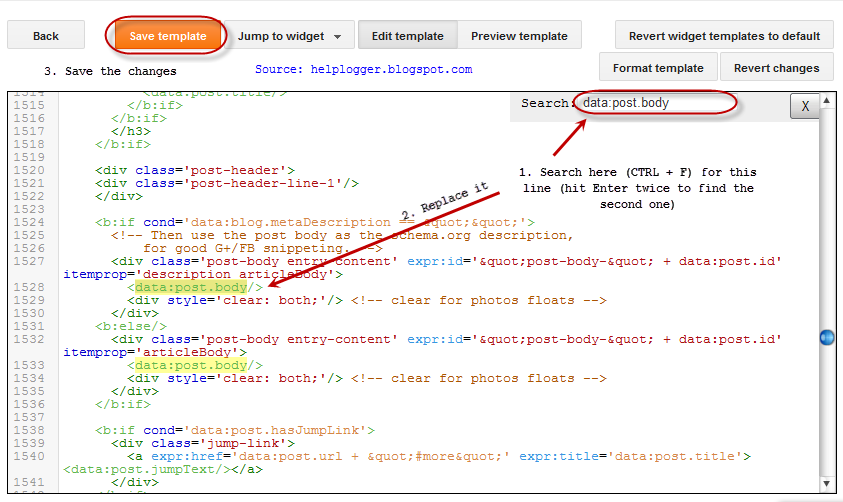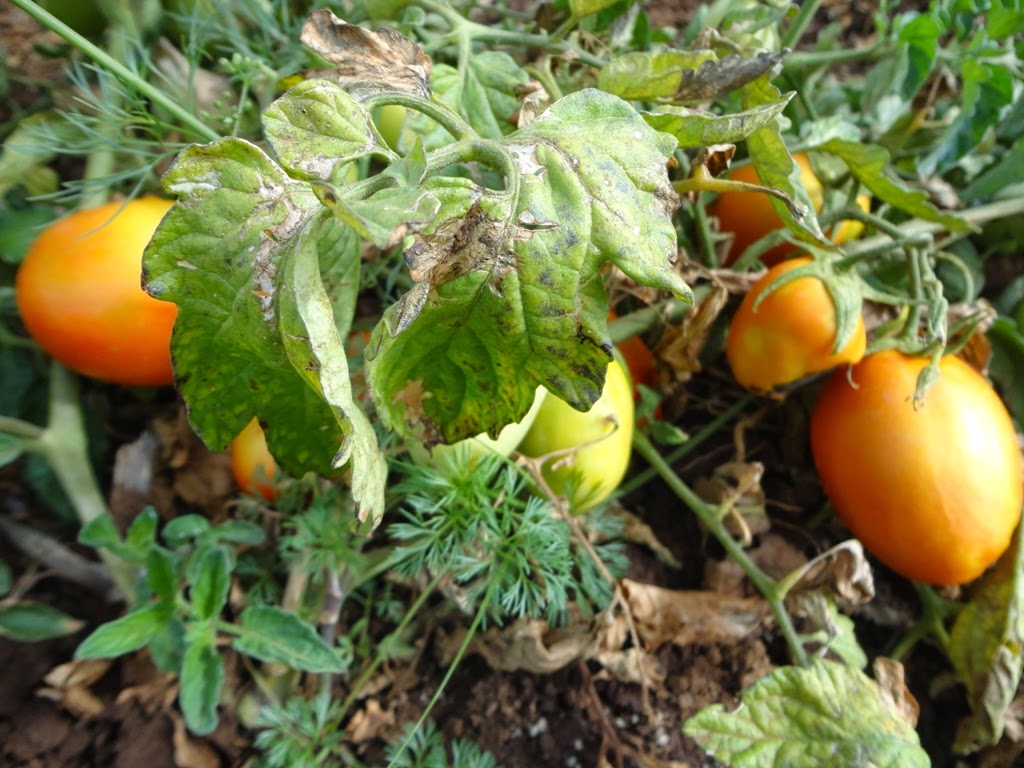Tomato is a very popular vegetable not only Nigeria but all over the world. We use it in cooking stews, soups, salads, jollof rice etc. If you had any doubt about the importance of tomatoes in Nigerian food, the recent tomato scarcity clear that. Tomato Farming is easy to start and requires not special expertise.
People eat tomatoes because of it’s numerous health and nutrition benefits:
– It is an excellent source of vitamin C and beta-carotene.
– Tomatoes deep redness mean it’s a very good source of antioxidant agents.
– It’s a powerful source of vitamin E and enhance the health and sharpness of the eyes.
The Market
Tomatoes are in high demand in Nigeria. Nigerians consume over 300,000 tons of tomato paste which if you convert it, is over 1.5 million tons of fresh tomatoes, which is crazy. Nigeria is also the biggest importer of tomato paste in Africa and spends about 16 billion Naira annually importing tomatoes! Tomato Farming is a potentially a 100 billion Naira market in Nigeria.
Starting a Tomato farm in Nigeria
Growing tomatoes isn’t hard, but there are a few things to be aware of. As with all things agrarian, timing, genetics and environment have to be in alignment to reap the rewards of your efforts.
Basics things you Need to Start Tomato Farming in Nigeria
– A Fertile Land (Size depends on the scale you want to start)
– Tomato Seeds (there are various varities, we will talk about it below)
– A Nursery (for preparing the tomato seeds)
– Disease Prevention and control
Tomato Farming Step One: Prepare The Nursery

Tomato seeds are almost usually started indoors (whether in a greenhouse or a sunny window ledge) and then transplanted to beds once they have at least a few leaves and an established root system. Starting seeds indoors is optional with many vegetables, but tomato seeds need a constant soil temperature of at least 60 degrees, and preferably 80 degrees, to germinate. Tomatoes originate deep in the tropics; temperatures below 32 degrees Fahrenheit will kill it.
You can also use a small piece of land (or your backyard) for your nursery. This can be done around March/April when the rain is just starting in most parts of the country; check with any farming calendar to find the best time for every year.
‘Soilless’ potting mix (available at any garden centre, A standard homemade soilless mix contains equal amounts of peat moss, perlite (and/or vermiculite), and sand. Bark can be used in absence of sand, while coconut coir can replace peat moss) is the medium of choice for sowing tomato seeds, though you can opt for the more expensive ‘seeding mix’ if you want. As for the container, cell packs (the tiny plastic pots grouped together in packs often used for flower and veggie seedlings) are OK for starting tomato seeds, but a better idea is to use a small pot at least 3 or 4 inches tall and wide so the seedlings can grow to a healthy size without their roots being constricted.
Read more how to prepare a Soil-less potting mix
The three most important steps are:
1) Fill the pots with potting mix to within a 1/2-inch of the top and place a pair of seeds on top of the soil in each one near the centre of the pot (having two is good insurance in case one doesn’t sprout. Pinch off the smaller, weaker of the two if they both sprout).
2) Cover them with a ¼-inch layer of soil mix and the compress the soil with your fingers. Good seed-to-soil contact is important for germination.
3) Sprinkle water on the seeds whenever the top of the soil mix appears dry. Don’t keep the soil soggy, so that the seeds won’t rot.
The seeds will need a sunny window with at least 4 hours of direct sun each day, but preferably more. Also: the warmer it is, the faster tomato seeds will germinate. Maintaining room temperature above 60ºF will get the job done, but there are also seedling heat mats, heat lamps and many other tricks that farmers and gardeners have concocted to speed up the process. A simple approach is to cover the pots tightly with plastic and take advantage of the greenhouse effect to warm up the soil when the sun is out and hold on to the heat at night.
There is an important thing to know about tomato seedlings and mini-greenhouses: If you’re covering your seeds to keep them warm, you must remove the cover as soon as they start to germinate. Otherwise, they may succumb to damping off disease, a fungal infection that proliferates in still, moist air. This appears as brown and grey spots on the leaves followed soon after by the death of the seedling). Damping off is a big challenge with tomato seedlings in general, so try to provide good air circulation during their infancy period indoors. A tiny fan or heat vent nearby is helpful, as is an open window from time to time (but only when outdoor temps get up to room temp).
It takes about 5-7 days for the seeds to start germinating.
Tomato Varieties
There are many tomatoes varieties, broadly categorized into:
Cherry tomatoes, such as Sun Gold, Napa Grape and Pear Drops, have the quintessential sweet-tart tomato flavour and are great for salads and snacking on whole. Because the fruit is small, these are the first to mature.
Sauce tomatoes, such as Roma, Amish Paste and Big Mama, have a richer flavour and much lower water content than other varieties. They’re the best ones for spaghetti sauce.
Beefsteak tomatoes, such as Mortgage Lifter, Cherokee Purple and Brandywine, have the biggest fruit and the greatest range of flavour and form. They are commonly sliced for sandwiches or making caprese salad, though the best varieties can be eaten like an apple.
Sauce tomatoes (Roma) is most popular in Nigeria Markets. Roma specie very unique because of it’s long shelf life, it’s hard back, and low water content which enables it to last longer after harvest. A paint rubber of the seed cost about N4,500-N6,500
Tomato Farming Step Two: Transplanting

Once the seeds have germinated, allow about extra 5 days for the sprout out. Before transplanting your seedlings there are two things you need to do: hardening off and soil preparation.
Hardening Off
“Hardening off” tomato seedlings means gradually introducing them to the outdoors. This should happen over a 10-day period. Acclimating tomato seedlings to outdoor conditions is a bit like helping your child adjust to kindergarten—it takes plenty of patience and hand-holding.
1) Find a sheltered place outside where the seedlings can sit in filtered sunlight, out of the wind. One option is to string a shade cloth overhead and on the side wind blows from.
2) Take your tomato seedlings outside and leave them in this protected place for a few hours on day one.
3) Bring them back inside.
4) On day two, leave them outdoors for a little longer.
5) Continue taking them back and forth each day, leaving them out a little longer each time and slowly increasing their sun exposure by inching them out of the shade.
6) After five or six days of going back and forth, leave the seedlings out overnight for the remaining four or five days. Keep an eye on the weather and bring them in if there is any danger of heavy rain or frost.
Soil Preparation
The warmer the soil is, the faster they will grow. And because heavy, waterlogged soil covered in weeds or cover crops is slow to warm up in rainy season, it’s helpful to prepare tomato beds a week or more before transplanting. Day one of the hardening-off period is a good time to start preparing the soil. Tomatoes prefer a location with 8 hours or more of direct sunlight and rich, well-drained soil.
1) Using a Rototiller or a digging fork, loosen the soil to a depth of at least 8 inches.
2) Spread 2 or 3 inches of compost over the surface and thoroughly mix it into the soil.
3) Using a hard metal rake, sculpt the loose soil into a low broad mound no more than 4 feet wide.
Transplanting
Tomatoes are ready for transplanting into the garden when the seedlings are 3 to 4 inches tall, and the nighttime temperatures are consistently above 50 degrees. Consult a biodynamic calendar to time your planting according to the optimal alignment of the moon and other celestial bodies—or just plant them when you have the time.
1) Dig a hole in the middle of your tomato bed that is at least a few inches deeper than the depth of the pot the seedlings are in. Check the seed package for the recommended spacing between seedlings for each variety you are planting. Spacing is based on the mature size of the plant and may range from 30 to 60 inches (avoid the temptation to plant the tiny seedlings closer together—overcrowding can contribute to the spread of diseases).
2) Remove each seedling from its container and loosen the roots very gently.
3) Plant the seedlings deep with only the topmost leaves aboveground. This technique helps tomatoes in many ways, improving drought tolerance, root establishment and wind resistance.
4) Tamp the soil firmly around the seedlings with your hands and then give them their first watering.
Important Tips to Note
Many things can go wrong in the short life of a tomato plant, so take a few extra steps to give your seedlings the best chance for success:
– Tomatoes need slightly acidic soil conditions (a pH between 6 and 6.8 is ideal). You can test your soil pH with a kit available at most farming centers/local extension service. Excessively acidic soil is remedied by adding lime; alkaline soil requires sulfur to lower the pH. It takes a few months to adjust the pH, so do these amendments months before planting time.
– A long list of soil-borne pathogens prey on tomato plants, so it’s best to avoid planting them in the same part of the garden for too many years in a row. If last year was a bad year for blights or other tomato diseases, this year is a good time to move them to a different area.
– After preparing beds for tomatoes, covering the soil with black plastic for a few weeks prior to planting is one way to get it warm. The air temperature may be above 50 degrees at night, but the soil is always colder. Black plastic absorbs the heat of the sun during the day and transfers it to the soil so it’s toasty once the seedlings go in. In cool climates with a short growing season, you can leave the plastic for the first few weeks after planting, putting the seedlings in the ground via a small slit.
– A healthy dressing of compost at planting time is a must for tomatoes, but adding some fertilizer ensures they get off to a strong start. One method is to dig a trench down the middle of the bed, a couple inches below the depth where the roots will be planted, and spread a band of fertilizer for them to grow into. A bone meal-based fertilizer, which is high in phosphorus, is best for root establishment. A few weeks after planting, a fertilizer with a higher nitrogen content (such as those with blood meal, fish emulsion, or bat guano) can be applied on the surface of the beds to support lush vegetative growth.
– Water your seedlings whenever the soil dries out an inch or two below the surface, which may be daily if a heat wave comes early. After three or four weeks of growth, mulch the beds with a thick layer of straw to conserve moisture and keep the weeds down.
Tomato Farming Step Three: Staking, Training and Pruning

Tomato beds can be very messy, ugly and disease-ridden if proper care is not taken. To keep your tomato farm from devolving into a sorry state, you need to care and support it. You can support your tomato stems with a trellis, stake or cage, and train them to grow on it while primping and pruning their vines into a respectable form. If you do this, the plants will be healthier, more productive and more presentable.
Somewhere on the seed packet in fine print you may find the words “determinate” or “indeterminate.” The former means the plant will grow to a certain, genetically determined size and then stop (the packet should indicate the size). The latter will grow indefinitely, as long as extreme temperatures or other acts of nature (or humans) don’t stop it.
Staking
The type of staking you use depends on the type you planted:
Wire Tomato Cages – in the shape of a downward-tapering cylinder: is fine for small, bushy determinate varieties, but will quickly become overwhelmed by a large indeterminate plant.
Stakes – A single, stout stake is an effective support structure for a tomato plant. For small determinate varieties, use a 1-inch-by-1-inch-by-4-foot stake and pound it into the ground at least 6 or 8 inches deep near the base of the plant. For large tomato vines, use a 2-inch-by-2-inch-by-7-foot stake and pound it in at least 14 to 16 inches. Avoid pressure treated lumber, since it may leach toxic chemicals into the ground around your tomato plants.
Trellises – a simple trellis to use for a single growing season, pound in a row of stakes along the center of your tomato bed and run horizontal lengths of twine between them. For small tomato varieties, use 1-inch by 1-inch by 4-foot stakes spaced every 4 to 6 feet and run the twine across every 6 inches. For larger varieties, use 2-inch-by-2-inch-by-7-foot stakes spaced every 6 to 8 feet and run the twine across every 12 inches.
Pruning and Training
Training tomatoes is simple, you have to start when they’re young, about a month after transplanting.
Tie the stems of your tomato plants to the support structure every 6 or 8 inches as they grow. The growing stems are soft and easily damaged, so you need to tie them loosely. Use thick garden twine, plastic plant tape, strips of fabric or old pantyhose. It’s always better to tie just above a cluster of flowers rather than just below—otherwise the stems holding the flowers may get crimped by the ties as the flowers turn into heavy clusters of fruit.
If you’re using the single-stake method or the single-string trellis method, you’ll want to train the tomato plants to a single stem. For the horizontal-string trellis method or the cage method, three or four stems works best. It’s best to decide on a method before planting the tomatoes, because they can be spaced much closer together if they will be trained to a single stem, versus those with multiple stems, which need to branch out over a larger area.
As the original stem grows, it will begin to sprout side stems—often called ‘suckers’—in the crotches between the leaves and the main stem. To maintain a single stem, prune out all suckers as they appear. For multiple stems, let the first few suckers that appear grow into stems of their own and prune out subsequent suckers. To prune, simply snap off the sucker with your fingers just above the point where it joins the main stem.
Tomato Farming Step Four: Disease Prevention and Control

Tomatoes are prone to so many diseases and pests, including viral, bacterial and fungal assailants. Keeping your plants healthy goes along way in helping prevent disease. Start by planting disease resistant-varieties. Training and trellising helps maintain airflow and keeps the fruit off the ground where the disease spores hide.
Minimize Irrigation: Tomato plants have surprisingly low water needs and overwatering can promote disease. Once the fruit has started to form, water only when the top three inches of soil becomes dry and the leaves look limp in the heat of the day.
Water at Ground Level: Little can be done about water that falls from the sky, but don’t add insult to injury by showering your tomatoes with a sprinkler—fungal diseases only spread when the plants are wet. Instead, use drip irrigation or a soaker hose to water at ground level.
Water in the Morning. This way, the moisture will evaporate quickly from the surface of soil, giving the roots the water they need, but keeping the humidity down around the plants.
Use Straw or dried leaves to mulch your tomatoes. Mulching helps by covering the fungal spores. Mulching also conserves moisture in the soil, so you don’t have to water as much.
Remove Infected Leaves Immediately. Don’t hesitate to clip off leaves as soon as any spots or deformation is apparent—it may save the rest of the plant from succumbing to the disease. Dispose of these clippings far away from your tomato plants.
Prune Out Dense Foliage. Tomatoes tend to grow more thickly than is necessary, reducing air flow and producing more foliage than their immune systems can support. Prune out new sprouts that emerge from the main stems once fruit has begun to develop and train the plants to an open, spreading form.
Keep Adjacent Vegetation Down. A thicket of weeds or a tall patch of corn or beans next to your tomatoes blocks airflow and keeps the humidity high at ground level. Ideally, tomatoes should be planted out in the open with nothing but mulch, turf grass or other small stature crops (like basil or garlic) around them.
Disinfect Tomato Tools. Anything that you use to prune diseased tomato plants or to work the soil around them should be disinfected before using on or around healthy tomato plants (plants in the tomato family, which includes peppers, potatoes and eggplant). Dipping the tools in a 10 percent bleach solution or full-strength rubbing alcohol is effective.
Control Insect Pests. Tomatoes are rarely destroyed by insects, but they are frequently attacked on a small scale, which weakens the plants and makes them more susceptible to disease. Some insects are also responsible for spreading diseases. Small sucking insects (like scale, aphids and mites) can be dispatched with all-natural insecticidal soap. Larger bugs (like hornworms and stinkbugs) can be picked off by hand. Check the stems and both sides of the leaves if you see signs of insect damage.
Fertilize. Tomatoes are heavy feeders and will have greater disease resistance with a few boosts of fertilizer during the growing season. Once the fruit has set, apply a high phosphorus fertilizer every three weeks.
Tomato Diseases
Most tomato diseases cannot be stopped once they are entrenched. There are fungicides and bactericides that can help, but they are only truly effective when applied as a preventative. There are products registered for use by organic farmers, such as copper sulfate, which are naturally derived but are still highly toxic. Organic farmers are only allowed to use those substances in extreme cases when they have documented that no other measures have been effective and they are in danger of significant economic losses if the disease were to progress.
Some home growers claim that piercing the base of the tomato plant with a strand of copper wire imbues them with antibiotic properties that keeps diseases at bay, though there is little scientific evidence to support this theory. Other home remedies range from hydrogen peroxide and baking soda sprays to applying a slurry of skim milk or just feeding the plants chamomile tea. While there may be merit to some of these approaches, waging war with tomato diseases is rarely a winning battle, making prevention the best cure.
Read How to Prevent Tomato Disease – Tuta absoluta (Known in Nigeria as Tomato Ebola)
Tomato plants are prone to fungal infections that can rapidly spread from the soil to leaves, stem, and eventually to the fruit. A fungal infection can significantly affect your harvest or it can ruin it altogether.
If your tomato grow in conditions that are prone to occurrence of fungi diseases, you should treat your plants with a fungicide even before you see the first symptoms on plants. Note, not all fungi develop in same environmental conditions, some thrive in colder regions while others don’t. However, most fungi usually prefer high-humidity environments.
Some common tomato diseases caused by fungi are:
- Tomato early blight (caused by Alternaria solani)
- Tomato late blight (caused by Phytophthora infestans, a microorganism similar to a fungus)
- Septoria leaf spot (caused by Septoria lycopersici)
- Buckeye rot (caused by Phytophthora parasitica)
- Anthracnose fruit rot (caused by several species of fungi in the genus Colletotrichum)
5 Best Fungicides for Tomatoes
Tomato flowers falling off (Blossom drop)
If you tomato flowers are falling off (blossom drop), this can be attributed to several causes, most often related to either temperature and / or stress. Tomato plants can tolerate extreme temperatures for short periods. When tomatoes plant is under temperature outside the ideal range (above 85 degrees in the day or below below 55 degrees Fahrenheit at night) for several days or nights, the plant will abort fruit set and focus on survival thereby dropping off the flowers.
Causes of Tomato Blossom drop:
- Temperatures that are too high or too low
- Lack of pollination
- Too much or too little nitrogen
- Humidity that’s too high or too low
- Lack of water
- Stress from insect damage or disease
- Excessively heavy fruit
How to Stop your Tomato Plant Flowers from Falling
Here are some tips to help in controlling tomato blossom drop:
- Grow varieties suited to your climate
- Ensure pollination: You can help pollination by planting nectar rich flowers like Pot Marigold, Cosmos, Lavender, Sunflower near your garden to attract pollinators like bees. Also, hand shaking of flowers can help carry the pollen from the anthers to the stigma.
- Don’t overuse fertilizers, too much nitrogen encourages the plant to grow more foliage, not more fruit.
- Ensure ideal humidity range between 40% and 70%. If humidity is either too high or too low it affects pollination.
- Water properly and deeply, at least once a week, during dry weather
- Treat diseases once you notice any symptoms, that way you can keep your tomato plant healthy
Tomato Farming Part Five: Harvesting and Selling

Within two months of transplanting tomato seedlings, the fruit should be filling out and starting to turn colour and ready for harvesting.
It’s best to cut them off with scissors or hand pruners with a short stub of stem attached—otherwise the area around the scar at the top may rot before you have a chance to eat.
Contrary to popular belief, tomatoes ripen just as well off the vine as long as they are picked in a ‘mature green’ state, which means that the seeds inside the fruit are fully developed. Green tomatoes may be picked once they’ve reached their maximum size and have begun to show the first blush of colour on their skin.
There are several circumstances where picking a tomato before it is fully coloured makes sense:
– Some varieties, especially heirloom varieties, are prone to cracking around the crown of the fruit, which leads to premature rotting. Picking them before they crack avoids the problem altogether.
– Tomatoes will not colour up when temperatures are consistently above 86 degrees and will rot on the vine in the green state. Bringing them indoors allows them to ripen fully.
– Cool rainy weather exacerbates the fungal diseases that tomatoes are so prone to. If the fruit begins to rot as it colours up, bring plants in when green.
Tomatoes do not need to be in a sunny window in order to ripen. In fact, they ripen much faster if placed in an enclosed space since they emit ethylene gas as they ripen. The greater the concentration of ethylene gas around the fruit, the faster and more fully they will ripen. A cupboard, paper bag or between sheets of newspaper are good places to ripen tomatoes indoors. They need oxygen to ripen, so don’t seal them up in a plastic bag or Tupperware. And above all, don’t put them in the refrigerator—they will not ripen at temperatures below 65.
Green tomatoes ripen indoors in approximately two weeks. To speed up the process, put a ripe banana or cut-open apple in a bag with the green tomatoes—both emit lots of ethylene gas.
Once tomatoes have fully ripened, they can be kept for up to four weeks at 55 degrees before they start to decay. They may last even longer in the refrigerator, but they turn bland and mealy when kept below 50 degrees.
Selling Your tomatoes
It is important to prepare your marketing well ahead of harvesting. Look for who or where to supply the product. This is because, tomato is a perishable product unless you have built storage system.
I will recommend selling in bulk especially if you have a big farm. You can go to markets and supply at a wholesale (low cost). Tomatoes are usually priced and sold in baskets.
Please drop your comments or any questions below. If you have any experience in tomato farming, please drop your contribution in the comment section below.

















![4 Strong Reasons Why You Should Consider Rice Farming [UPDATED]](https://nairabrains.com/wp-content/uploads/2015/07/Rice-grain-1-1024x697.jpg)




